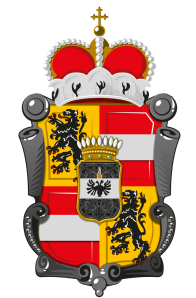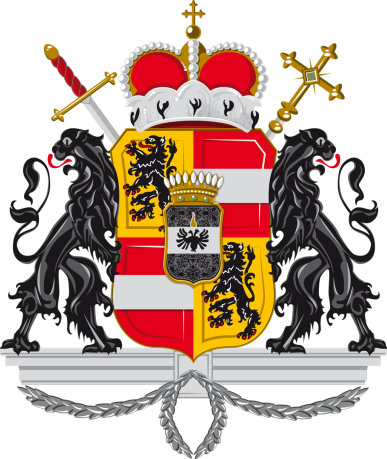Prince Archbishop
Hieronymus Graf Colloredo
1772–1803
A man of the world and lover of art in the Residenz Palace
Hieronymus Colloredo modernised his principality but outside events brought about his downfall

A member of the aristocratic Starhemberg family
Hieronymus Count Colloredo was born in Vienna on 31 May 1732. He was the fifth of what would turn out to be eighteen children. His father was the subsequently controversial Imperial Vice-Chancellor Rudolf Joseph Count Colloredo. His mother was Maria Franziska Gabriela who was born Countess Starhemberg.
During his childhood, Hieronymus was subject to a strict religious upbringing. He attended the Theresianum Academy in Vienna, went on to study philosophy at the University of Vienna and then theology at the Collegium Germanicum et Hungaricum in Rome.
Er starb am 20. Mai 1812 in Wien. Bestattet wurde er auf eigenen Wunsch im Stephansdom zu Wien, allerdings wurden 2003 seine sterblichen Überreste überraschenderweise nach Salzburg überführt und in der Krypta des Doms beigesetzt.
A progressive outlook
Hieronymus Colloredo was Bishop of Gurk from 1761 to 1772 and the last reigning prince-archbishop of the Archdiocese of Salzburg from 1772 to 1803. After his dethronement, he remained the ecclesiastical head of the archdiocese although now resident in Vienna.
Der fortschrittliche Geist lockte führende Wissenschaftler, Schriftsteller und Musiker aus dem deutschen Sprachraum nach Salzburg. Der Fürst besaß eine hohe Intelligenz, ein schnelles Urteilsvermögen, eine ausgezeichnete Menschenkenntnis sowie eine weltmännische und geschickte Verhandlungsweise.
At the same time, he lived a simple life without ostentation. He was fluent in German, Latin, French, Italian and Czech and played the violin. Colloredo was also a connoisseur of fine art. According to a treatise published in Florence, it would seem he was the owner of a genuine Leonardo da Vinci.
The reformer of Salzburg
Colloredo gilt als ein Repräsentant einer Epochenwende. Einerseits vertrat er eine durch die Gegenreformation gestärkte katholische Kirche, andererseits blickte er mit seinen weltlichen Reformen weit in das 19. Jahrhundert hinein. Colloredo hat viele Neuerungen angestoßen – wie etwa in der Bildung, der Vermessung des Landes und der Flussregulierung.
Der sparsame, fast geizige Landesfürst war zwar bei seinen Untertanen nicht sehr beliebt, jedoch erlebte Salzburg unter seiner Regentschaft nochmals eine wirtschaftliche Blütezeit. Colloredo fand einen verlotterten Staat vor und investierte sein privates Vermögen, um diesen wieder wirtschaftlich zu sanieren. Während seiner rund drei Jahrzehnte dauernden Regentschaft förderte er Wissenschaften und Publizistik und er setzte sich für ein modernes Steuerwesen ein.
The archdiocese under attack
From 1782, the outside threats to the archdiocese gradually increased. Colloredo was among the German Catholic archbishops who issued the 'Punctation of Ems' in 1786, an attempt to gain greater autonomy from the Roman Curia.
Im Spannungsfeld zwischen Wien, Berlin, Mainz, München und Rom hatte Colloredo zwischen 1787 und 1790 erhebliche Belastungsproben zu bestehen. Am 10. Dezember 1800 musste Colloredo, nach dem ungünstigen Verlauf der Schlacht bei Hohenlinden in Bayern, vor den anrückenden Napoleonischen Truppen flüchten. 1803 wurde das Fürsterzbistum säkularisiert, der inzwischen im Wiener Exil lebende Fürsterzbischof verzichtete daraufhin auf alle weltlichen Herrschaftsansprüche.
A registry as legacy
From 1776 to 1779, the prince-archbishop had a land registry prepared in which all tax obligations were documented. This is an important source of information on the economy and land holdings at the time.
(Picture: Altstadt Verband / Sajovic)
Colloredo's coat of arms
This consists of, as main shield, the quartered arms of the archdiocese with a smaller central shield with the coat of arms of the Colloredo-Wallsee family.
On the black field of this central shield is a silver band on which is a black crowned and double-headed eagle with outspread wings. There is also a crown on top of the central shield.





